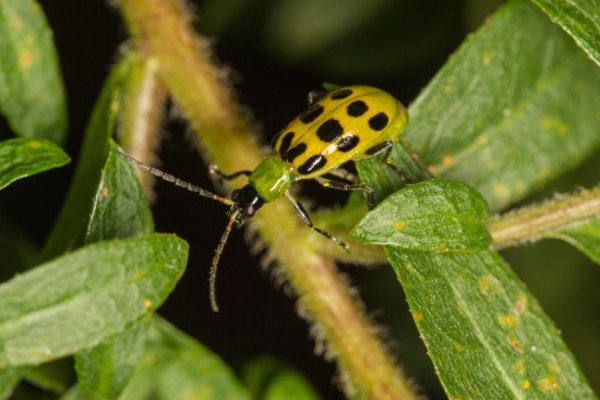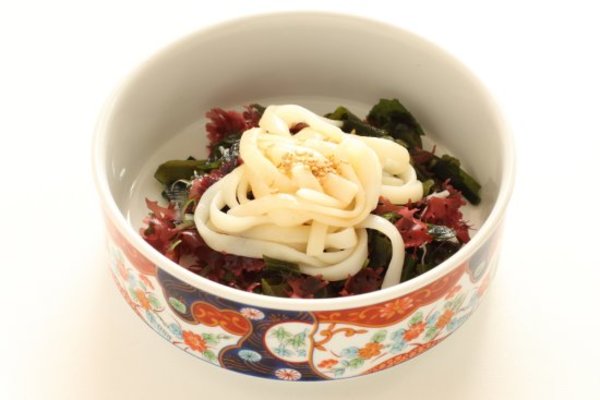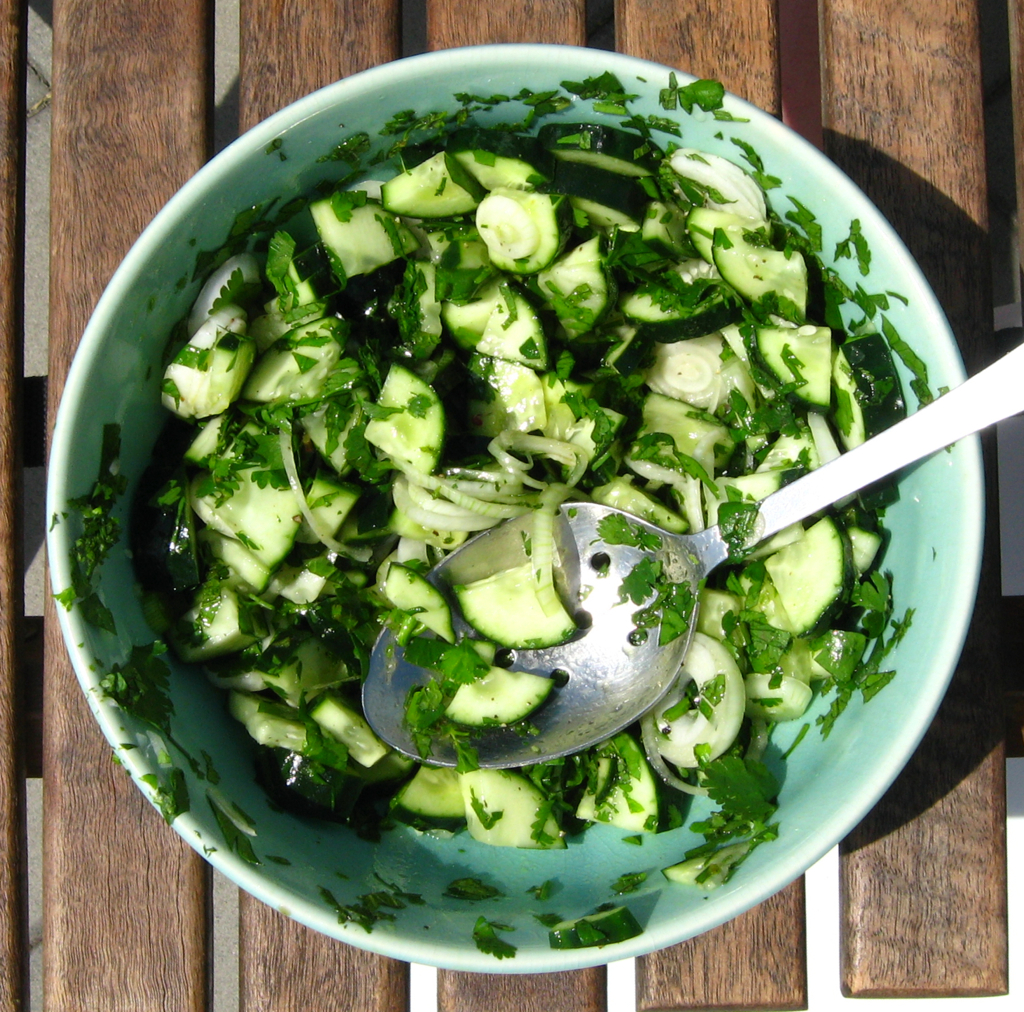Growing Cucumbers: 6 Cool (and Crunchy) Simple Steps

Are you cool as a cucumber? That turn of phrase comes from the fruit’s ability to cool the temperature of the blood and reduce swelling. But aside from its role in your health and beauty regimen, cucumbers also offer diverse flavors. Whether you favor elegant cucumber sandwiches, sweet pickles, or cool cucumber salad, the humble cuke offers diversity for your palate. By growing cucumbers in your garden you have the opportunity to sample many of these diverse flavors.
Getting to know the cucumber plant
The cucumber plant is a part of the cucurbita family which also includes watermelon, squash, gourds, pumpkin, and other melons. Originally from Southeast Asia, they’re now found growing on most continents.
As a gardener, you have many options regarding the type of cucumbers you grow, but they are grouped into three main categories: slicing, pickling, and burpless. Within each of these categories there are many cultivars.
Generally speaking, slicing cucumbers are best in salads and sandwiches; pickling varieties are best, you guessed it, for pickling; and burpless cukes are less bitter and will help you to burp less (hence, the name) after eating.
Curious about why cucumbers cause you to burp? Me too. Here’s what I learn from the smart folks at the University of California, “The burps are caused by ‘toxic’ compounds found in the flesh of cucumbers. These compounds, known as cucurbitacins, are what cause the bitter taste as well. Burpless cucumbers have been cultivated to have less cucurbitacins. Interestingly, cucurbitacins aren’t all bad. The compounds are thought to protect the cucumber from disease and pests. Some cucurbitacins have antitumor activity in humans, which means the compounds may help to slow tumor growth in patients with active cancer.”
Choosing disease-resistant varieties may go a long way toward preventing diseases such as alternaria leaf blight, angular leaf spot, and bacterial leaf spot.
Preschoolers learn that when they’re instructed to color a cucumber they should use their green crayon. Not so fast, four-year-olds! Cucumbers can also be yellow. Interested in using different colors on your dinner plate? Try any variety with lemon in its name; large Dutch yellow is a delicious yellow cucumber. Want even more variety? Try the salt and pepper cucumber, which is all white.
Nutritionally, cucumbers hold their own against other fruits and veggies. They contain a high level of vitamin K and are well regarded for their anti-inflammatory properties.

photo of cucumber on vine via Shutterstock
How to grow cucumbers in 6 easy steps
1. Prepare the soil. The cucumber plant wants loose soil. However, if your soil contains clay, cucumbers are fairly forgiving. As long as the clay soil is well-draining, in order to prevent root rot, cucumbers will grow fine.
Amend the soil with compost for nutrition. (Plan to add compost to the soil again in a month after the first tendrils appear.)
2. Cucumbers can be started indoors 3-4 weeks before going outside, however, they grow relatively quickly so this isn’t imperative. Plants (or seeds) can go in the ground once the soil temperature is 50 degrees Fahrenheit.
3. Cucumbers need lots (and lots) of room to grow. Each spring when I plant mine I’m reminded of how much garden space they occupy. Specifically, cucumbers growing along a trellis should be spaced 18 inches apart. Plants growing directly in your garden without a trellis want three feet of growing space so they can sprawl.
4. Choose a bright growing location. The cucumber plant wants sun, sun, and more sun. They crave at least 5-7 hours of full, direct sunlight per day, but won’t complain if they get up to nine hours.
5. Plant cucumber seeds or seedlings only a few inches deep. The root system of the plant grows close to the surface and burying the root system too deep may encourage root rot.
6. Harvest cucumbers in the morning for crispier fruit. When the fruit is 1-1 1/2 inches in diameter it’s ready to be harvested. Stay on top of your harvest; the more cukes you pick the more you’ll get as picking encourages further growth.
Additional tips and tricks:
Soil:
The cucumber plant is leafy, which means it requires nitrogen-rich soil to encourage that leaf growth before the fruit appears. Look for an organic fertilizer that has a 10-7-7 balance. (Alternately, a 7-5-5 or 6-3-3 mix will be fine.)
Sun and water:
In order to help the sun-loving plants get as much sun as possible, place your trellis in an east-west direction. By doing this the plants will optimize their exposure to southern light.
Cucumber plants like to be soaked in the morning before the heat of the day, but then they like to completely dry out before another soaking. Allow the soil to dry out to a depth of 3-4 inches. This watering schedule helps to prevent stem rot and powdery mildew.
However, don’t let the plants dry out too much as this can encourage blossom end rot, which is also nasty.
Cucumbers are climbers:
Because cucumbers require so much space to grow, if you garden space is limited, consider erecting a trellis for them to climb.
If you do this, bear in mind that the delicate tendrils the plant puts out are not as “sticky” as those that pea plants grow. So, you’ll need a way to help the vines attach to the trellis. Some gardeners use garden clips which are inexpensive, can be used year after year, and are found at your local garden center. I use twine or twist-ties to help my cucumber vines climb the trellis.
As a bonus, having cucumber vines grow vertically up the trellis means that more air circulates around the plant thereby deterring powdery mildew. And, growing cukes on a trellis encourages the fruit to grow straighter (although it can still grow in some charmingly oddball shapes).
Plant cucumbers close to the trellis so that they will start climbing it as soon as they’re a few inches tall.
Are cukes a good candidate for container gardening?
By now you know that cucumbers require a lot of space. So, does that mean that they can’t be grown in a container? No. Cucumbers absolutely can be grown in a container, but make sure it’s a large container.
If you have a raised bed that stands a couple feet tall, the plants will enjoy sprawling down its sides. Alternatively, whiskey barrels or plastic buckets are good options.
Bitter = Bad
There’s nothing more discouraging than putting the time and resources into growing gorgeous cucumbers, taking your first bite and tasting a bitter flavor. As a general rule, a bitter tasting cucumber is the result of the variety you planted, and not a result of your growing practices.
Try beit alpha, lemon cuke, tendergreen burpless, and white wonder cucumber varieties for a guaranteed sweet fruit.

photo of cucumber beetle via Shutterstock
Know thy enemy: The cucumber beetle
As organic gardeners know, the best way to treat an infestation of pests is to prevent them from appearing in the first place. The cucumber beetle is especially despicable because it not only eats your precious cucumber plants, but it also spreads diseases such as mosaic virus and bacterial wilt. Floating row covers go a long way toward deterring cucumber beetles. However, be sure to remove the covers when plant flowers appear so that beneficial pollinators can do their important work.
Your fruit runs the risk of being sadly misshapen if it doesn’t get the proper pollination. Consider planting flowers such as lavender, thyme, and dandelion (yes, most people try to avoid it, but bees love it), that attract pollinators to your garden.
I like adhesive traps because they show me when the beetles have descended on my garden. When you find beetles on the traps, go to your garden at night and dig around the stem of the plants to make sure there are no larvae present. If you find larvae destroy it.
Why organic?
Cucumbers hold a place on the Environmental Working Group’s Dirty Dozen list. This list is based on the results of pesticide tests performed on produce by federal agencies over the past nine years. Sadly, conventionally grown cucumbers are heavily treated with pesticides (remember that nasty beetle). The good news? By growing your own cukes without pesticides or herbicides you can avoid this nastiness.
Recipes that celebrate the cucumber:

noodle image via Shutterstock
Cucumbers originated in Asia and they are a refreshing addition to many Asian-inspired recipes. This cold wakame shirataki noodle recipe would be great on a hot summer evening.

image of cucumber salad via Simon Aughton
Summer salads show off cucumbers and are easy to prepare. I especially like these choices that have an international flare.

image of cucumber varieties via The Bitten World
Cucumbers are mostly made up of water, which is why they’re so refreshing. These vegetarian dishes celebrate the cool cucumber.
Have you successfully grown cucumbers? Share your tips and tricks on our Facebook page or Tweet at us @organicauthorit.
Related on Organic Authority
Growing Potatoes: 5 Proven Steps to Spectacular Spuds
Everything You Need to Know About Growing Tomatoes
How to Grow Garlic in 3 Steps for Maximum Flavor (and Vampire Prevention!)
photo of cucumber in box via Shutterstock

